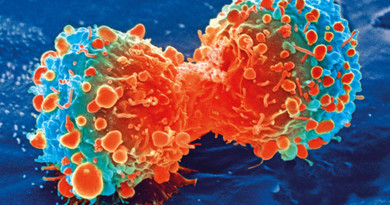Heritage: A phase III safety and efficacy trial of the proposed trastuzumab biosimilar Myl-1401O versus Herceptin
Hope S. Rugo, Abhijit Barve, Cornelius F. Waller, Miguel Hernandez-Bronchud, Jay Herson, Jinyu Yuan, Alexey Manikhas, Igor Bondarenko, Guzel Mukhametshina, Gia Nemsadze, Joseph D. Parra, Maria Luisa T. Abesamis Tiambeng, Kakhaber Baramidze, Charuwan Akewanlop, Ihor Vynnychenko, Virote Sriuranpong, Gopichand Manillapalli, Sirshendu Ray, Eduardo Patricio Yanez Ruiz and Eduardo J. Pennella
University of California, San Francisco, San Francisco, CA; Head of Global Clinical Research, Mylan, Canonsburg, PA; University of Freiburg Medical Center, Freiburg, Germany; Quiron Group Spain, Bellaterra, Spain; Johns Hopkins Bloomberg School of Public Health, Chevy Chase, MD; Director Biostatistics, Mylan, Canonsburgh, PA; City Clinical Oncological Dispensary, St. Petersburg, Russian Federation; Dnipropetrovsk State Medical Academy, Dnepropetrovsk, Ukraine; Regional Clinical Oncological Center, Kazan, Russia; Institute of Clinical Oncology, Tbilisi, Georgia; St. Luke’s Medical Center, Taguig City, Philippines; Cardinal Santos Medical Center, Cancer Institute, Metro Manila, philippines; Golden Fleece 21 Century Health House Ltd, Tbilisi, Georgia; Siriraj Hospital, Bangkok, Thailand; Sumy Regional Clinical Oncology Center, Oncothoracic Department, Sumy State University, Sumy, Ukraine; King Chulalongkorn Memorial Hospital, Bangkok, Thailand; City Cancer Centre, Vijaywada, India; Curie Manavata Cancer Centre, Nasik, India; Instituto Clinico Oncologico del Sur, Temuco, Chile; Mylan, Canonsburg, PA
Abstract
LBA503
Background: Trastuzumab has revolutionized treatment of HER2+ breast cancer. Globally accessible alternatives are a critical need. We evaluated Myl-1401O, a proposed trastuzumab biosimilar, as treatment for HER2+ metastatic breast cancer (MBC), based on physicochemical analyses, nonclinical, pharmacokinetic and pharmacodynamic studies*.Methods: Heritage is a double-blind, randomized clinical trial designed to evaluate comparative efficacy and safety of Myl-1401O vs Herceptin. Eligible patients (pts) had centrally confirmed, measurable HER2+ MBC without prior chemotherapy or trastuzumab for metastatic disease. Pts were randomized to receive either Myl-1401O or Herceptin with docetaxel or paclitaxel for a minimum of 8 cycles. Trastuzumab was continued until progression. The primary endpoint was overall response (ORR) at Week 24 by blinded central evaluation using RECIST 1.1. Secondary endpoints include progression free survival (PFS), overall survival, and safety. A sample size of 456 pts was calculated to demonstrate equivalence in ORR at Week 24 for MYL-1401O vs Herceptin, defined as a 90% confidence interval (CI) for the ratio of best ORR within the equivalence margin (0.81, 1.24). Results: 500 pts were randomized, 458 were evaluable for efficacy. 44% had hormone receptor positive MBC, 84% received docetaxel. Week 24 ORR was 69.6% for Myl-14010 compared to 64% for Herceptin. The ratio of ORR was 1.09; both 90% CI (0.974-1.211) and 95% CI (0.954-1.237) were within the pre-defined equivalence margin. Median PFS is not yet reached (41 events for MYL-1401O vs 48 events for Herceptin). Safety was comparable; serious adverse events (primarily neutropenia related) occurred in 38% (MYL-1401O) vs 36% (Herceptin), with 4 fatal events in each arm. There was no significant change in cardiac function from baseline to Week 24 in either arm.Conclusions: MYL-1401O was equivalent to Herceptin, given in combination with a taxane as first-line therapy for MBC, as measured by 24 week ORR. Safety was comparable. The proposed trastuzumab biosimilar MYL-1401O could be a new treatment option for HER2+ MBC. * Presented at: British Pharmacological Society, Pharmacology Meeting; 2015 Dec 15-17; London, UK. Clinical trial information: 2011-001965-42.




